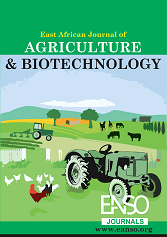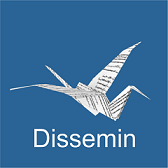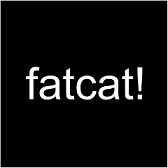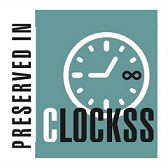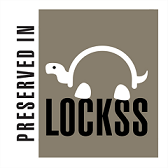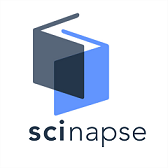Parity and Homeorhetic Prioritisation in Friesian Cows in 30–day Post-parturient Period in Uasin Gishu County, Kenya
Abstract
The transition period to parturition introduces significant homeorhetic and metabolic challenges that significantly influence the hormone levels, feed intake, body weight and lactational performance of a cow in the immediate post-parturient period. Thus, the study examined how Friesian cows prioritised homeorhetic balance in the first 30 days of post-parturition. Nine Friesian cows whose milk production averaged 20 litres per day were purposively selected from Elso, Elfam and Betan farms, whose farm management practices are standardised and studied on-field. Each cow was fed daily on a 40 kg ration of forage, mineral licks and water ad libitum. The cows were weighed daily, and the quantity of feed intake was determined. Blood samples were collected in the morning after parturition and at 7-day intervals and tested for cortisol, prolactin, oestrogen, and IGF-1 levels. Microsoft Excel and Genstat 14 were used to analyse the data both descriptively and inferentially, using ANOVA and correlations. As cows displayed a negative energy balance (NEB) state in the first 21 days of post-parturiency, feed intake was initially low but gradually increased to match the energy status of the cow. The initial milk yield was low due to NEB and stress, but progressively increased with time as the cortisol levels declined while IGF, prolactin and oestrogen concurrently increased during the 30-day post-parturiency. Feed intake was significantly and negatively correlated to cortisol levels (r = -0.613), but positively correlated to milk yield (r = 0.615), prolactin (r = 0.760), Oestrogen (r = 0.785), and IGF (r = 0.692). The study concluded that a causal linkage existed between feed intake, milk yield and hormonal profile during the 30-day post-parturient period. The study recommends that the nutritional requirements of a dairy cow in the transition to post-parturiency be adequately provided.
Downloads
References
AOAC International (2019). Official Methods of Analysis. 21st ed. Association of Official Analytical Chemists, Washington, D.C.
Apelo, S. A., Knapp, J. R., & Hanigan, M. D. (2014a). Invited review: Current representation and future trends of predicting amino acid utilisation in the lactating dairy cow. Journal of Dairy Science, 97(7), 4000-4017.
Asgari Safdar, A., H. Daghigh Kia, G. Moghaddam, A. Khani and S. Alijani (2013). Reproductive Performance and Blood Metabolites Concentration in Iranian Afshari Ewes Fed Calcium Salts of Fatty Acids (CSFA) in Flushing Period, International Journal of Advanced Biological and Biomedical Research, 1: 669–676.
Ayoub, A. G., & Allam, A. T. (2015). Alterations of Lipid and Mineral Metabolism during Late Pregnancy and Early Lactation in Holstein–Friesian cows. Egyptian Journal of Chemistry and Environmental Health, 1(1), 883-898.
Bisinotto, R. S., Greco, L. F., Ribeiro, E. S., Martinez, N., Lima, F. S., Staples, C. R., ... & Santos, J. E. P. (2018). Influences of nutrition and metabolism on fertility of dairy cows. Animal Reproduction (AR), 9(3), 260-272.
Buza, M. H., & Holden, L. A. (2016). A survey of feeding management practices and by-product feed usage on Pennsylvania dairy farms. The Professional Animal Scientist, 32(2), 248-252.
Chapinal, N., LeBlanc, S. J., Carson, M. E., Leslie, K. E., Godden, S., Capel, M., ... & Duffield, T. F. (2012). Herd-level association of serum metabolites in the transition period with disease, milk production, and early lactation reproductive performance. Journal of Dairy Science, 95(10), 5676-5682.
Djoković, R., Cincović, M., Belić, B., Toholj, B., Davidov, I., & Hristovska, T. (2015). Relationship between blood metabolic hormones, metabolites and energy balance in Simmental dairy cows during peripartum period and lactation. Pakistan Veterinary Journal, 35(2): 163-167
Djokovic, R., Kurcubic, V., Ilic, Z., Cincovic, M., Lalovic, M., Jasovic, B. and Bojkovski, J. (2017). Correlation between blood biochemical metabolites milk yield, dry matter intake and energy balance in dairy cows during early and mid-lactation. Advanced Diabetes Metabolism. 5(2): 26-30.
Drackley, J. K., & Cardoso, F. C. (2014). Prepartum and postpartum nutritional management to optimise fertility in high-yielding dairy cows in confined TMR systems. Animal, 8(s1), 5-14.
Gross, J., van Dorland, H. A., Bruckmaier, R. M., & Schwarz, F. J. (2011). Performance and metabolic profile of dairy cows during a lactational and deliberately induced negative energy balance with subsequent realimentation. Journal of Dairy Science, 94(4), 1820-1830.
Gruber, L., Urdl, M., Obritzhauser, W., Schauer, A., Häusler, J., & Steiner, B. (2014). Influence of energy and nutrient supply pre- and post-partum on the performance of multiparous Simmental, Brown Swiss and Holstein cows in early lactation. Animal, 8(1), 58-71.
Henrick, B. M., Nag, K., Yao, X. D., Drannik, A. G., Aldrovandi, G. M., & Rosenthal, K. L. (2012). Milk matters: soluble Toll-like receptor 2 (sTLR2) in breast milk significantly inhibits HIV-1 infection and inflammation. PloS one, 7(7), e40138.
Herosimczyk, G., Waage, S., Dahl, E., Karlberg, K., Beckers, J.F., Ropstad, E. (2013) Pregnancy-associated glycoproteins (PAG) in postpartum cows, ewes, goats and their offspring. Theriogenology, 66, 1976–1984.
Hernández-Castellano, L. E., Hernandez, L. L., Sauerwein, H., & Bruckmaier, R. M. (2017). Endocrine and metabolic changes in transition dairy cows are affected by prepartum infusions of a serotonin precursor. Journal of Dairy Science, 100(6), 5050-5057.
Ingvartsen, K. L., & Moyes, K. (2013). Nutrition, immune function and health of dairy cattle. Animal, 7(s1), 112-122
Jensen, M. B., & Proudfoot, K. L. (2017). Effect of group size and health status on behaviour and feed intake of multiparous dairy cows in early lactation. Journal of Dairy Science, 100(12), 9759-9768.
Jorritsma, R., Wensing,T., Kruip, T.A., Vos, P.L.,Noordhuizen, J.P. (2003). Metabolic changes in early lactation and impaired reproductive performance in dairy cows. Veterinary Research, 34, 11–26.
Jorritsma, R., Wensing, T., Kruip, T., Vos, P., & Noordhuizen, J. (2013). Metabolic changes in early lactation and impaired reproductive performance in dairy cows. Veterinary research, 34(1), 11-26.
Kawashima, C., Matsui, M., Shimizu, T., Kida, K., & Miyamoto, A. (2012). Nutritional factors that regulate ovulation of the dominant follicle during the first follicular wave postpartum in high-producing dairy cows. Journal of Reproduction and Development, 58(1), 10-16.
Kenéz, Á., Kulcsár, A., Kluge, F., Benbelkacem, I., Hansen, K., Locher, L., ... & Huber, K. (2015). Changes of adipose tissue morphology and composition during late pregnancy and early lactation in dairy cows. PloS one, 10(5), e0127208.
Kitilit, J. K., Cheruiyot, A. C., & Kios, D. K. (2016). Effects of negative energy balance on health and milk yield of lactating dairy cattle. Egerton Journal of Science & Technology, 15.
Kurpińska, A., & Skrzypczak, W. (2020). Hormonal changes in dairy cows during periparturient period. Acta Scientiarum Polonorum Zootechnica, 18(4), 13-22.
McNamara, J. P. (1991). Regulation of adipose tissue metabolism in support of lactation. Journal of Dairy Science, 74(2), 706-719.
Montoya, E. S., Chará, J. D., & Barahona-Rosales, R. (2017). The nutritional balance of early lactation dairy cows grazing in intensive silvopastoral systems. Ciência Animal Brasileira, 18, e40419.
Moraes, L. E., Kebreab, E., Strathe, A. B., Dijkstra, J., France, J., Casper, D. P., & Fadel, J. G. (2015). Multivariate and univariate analysis of energy balance data from lactating dairy cows. Journal of Dairy Science, 98(6), 4012-4029.
Piccioli-Cappelli, F., Loor, J. J., Seal, C. J., Minuti, A., & Trevisi, E. (2014). Effect of dietary energy level and high rumen-undegradable protein on endocrine-metabolic status, milk yield, and milk composition in dairy cows during early and late lactation. Journal of Dairy Science, 97(12), 7788-7803.
Poncheki, J. K., Canha, M. L. S., Viechnieski, S. L., & Almeida, R. D. (2015). Analysis of daily body weight of dairy cows in early lactation and associations with productive and reproductive performance. Revista Brasileira de Zootecnia, 44(5), 187-192.
Roche, J. R., Friggens, N. C., Kay, J. K., Fisher, M. W., Stafford, K. J., & Berry, D. P. (2009). Invited review: Body condition score and its association with dairy cow productivity, health, and welfare. Journal of Dairy Science, 92(12), 5769-5801.
Rodney, R. M., Celi, P., Scott, W., Breinhild, K., Santos, J. E. P., & Lean, I. J. (2018). Effects of nutrition on the fertility of lactating dairy cattle. Journal of Dairy Science, 101(6), 5115-5133.
Sammad, A. K. (2022). Major nutritional metabolic alterations influencing the reproductive system of postpartum dairy cows. Metabolites, 12(1), 60.
Singh, P., Alex, J. M., & Bast, F. (2014). Insulin receptor (IR) and insulin-like growth factor receptor 1 (IGF-1R) signalling systems: novel treatment strategies for cancer. Medical oncology, 31, 1-14.
Song, Y., Wang, Z., Zhao, C., Bai, Y., Xia, C., & Xu, C. (2021). Effect of negative energy balance on plasma metabolites, minerals, hormones, cytokines and ovarian follicular growth rate in Holstein dairy cows. Journal of Veterinary Research, 65(3), 361.
Toledo-Alvarado, H., Cecchinato, A., & Bittante, G. (2017). Fertility traits of Holstein, Brown Swiss, Simmental, and Alpine Grey cows are differently affected by herd productivity and milk yield of individual cows. Journal of Dairy Science, 100(10), 8220-8231.
Tong, J. J., Thompson, I. M., Zhao, X., & Lacasse, P. (2018). Effect of the concentration of circulating prolactin on dairy cows' responsiveness to domperidone injection. Journal of Dairy Science, 101(3), 2579-2587.
Wu, X., Sun, H. Z., Xue, M., Wang, D., Guan, L., & Liu, J. (2019). Days-in-milk and parity affected serum biochemical parameters and hormone profiles in mid-lactation Holstein cows. Animals, 9(5), 230.
Zbinden, R. S., Falk, M., Münger, A., Dohme‐Meier, F., van Dorland, H. A., Bruckmaier, R. M., & Gross, J. J. (2017). Metabolic load in dairy cows kept in herbage‐based feeding systems and suitability of potential markers for compromised well‐being. Journal of animal physiology and animal nutrition, 101(4), 767-778.
Zhang, J., Guan, F., Huang, S., Ma, Y., Wen, S., Jin, W., & Mao, S. (2024). Fermented soybean meal modified the rumen microbiota and increased the serum prolactin level in lactating Holstein cows. Frontiers in Veterinary Science, 11, 1498639.
Copyright (c) 2025 Christopher Kiptoo Murgor, Jackson Kibet Kitilit, Joseph Amesa Omega

This work is licensed under a Creative Commons Attribution 4.0 International License.

